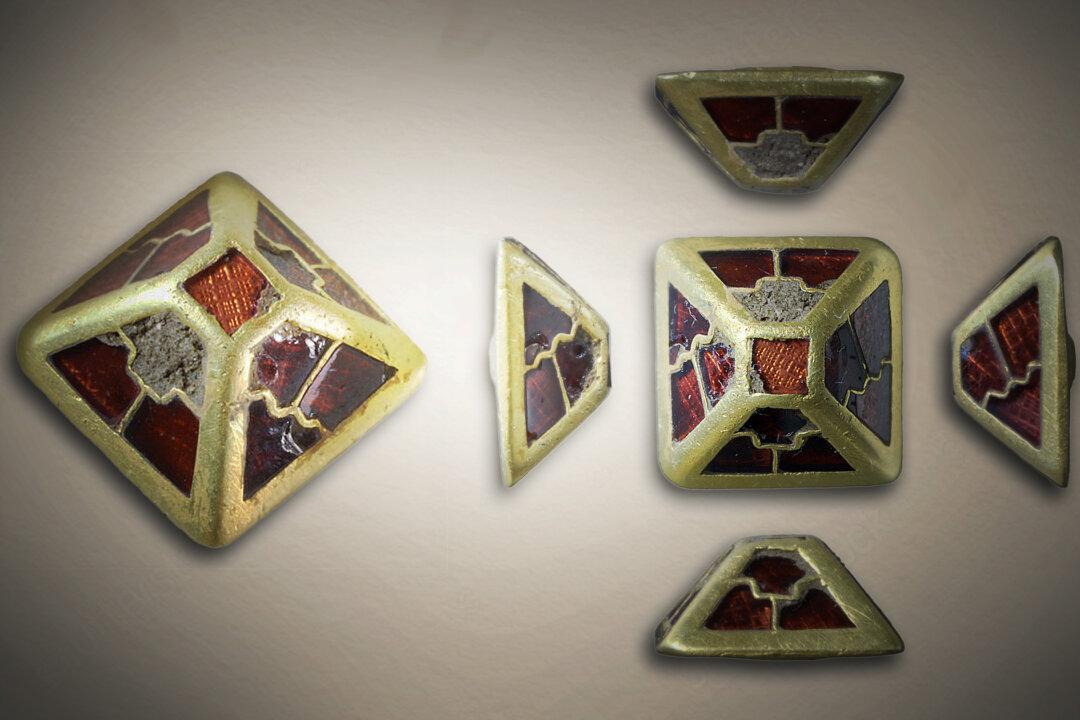While surveying the English countryside, amateur metal detectorist Jamie Harcourt stumbled upon a small jeweled piece of an Anglo-Saxon sword—that might once have belonged to a medieval lord or noble.
No larger than the tip of a finger, the artifact was identified as a “sword pyramid,” a decoratively crafted gold and garnet (a red translucent stone) faceted object, which would have served to hold the weapon secure in its scabbard.






